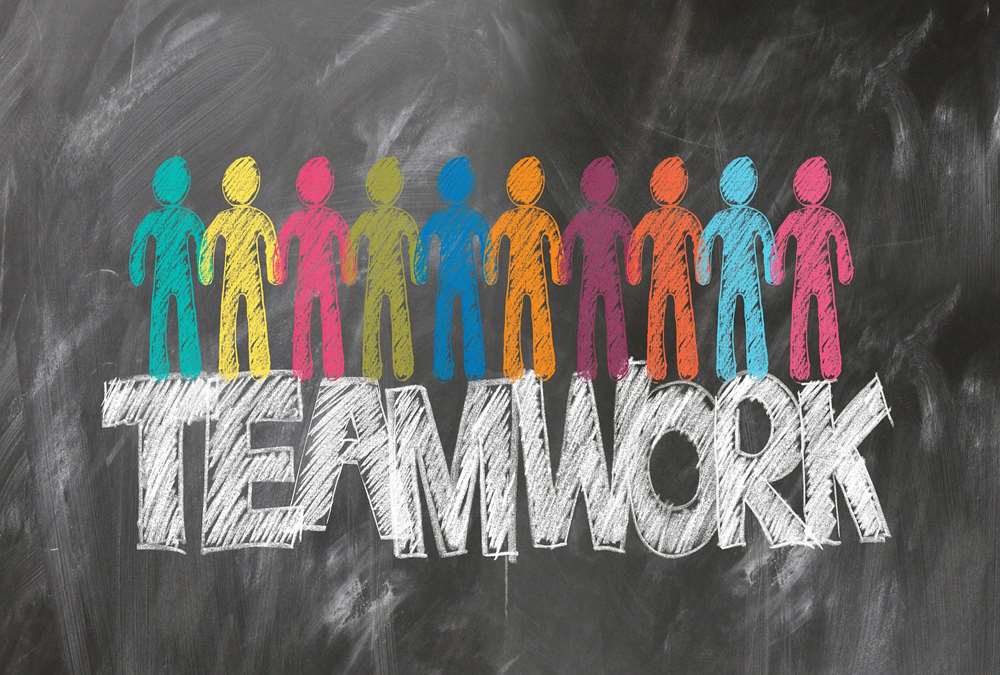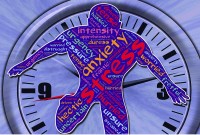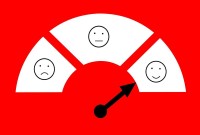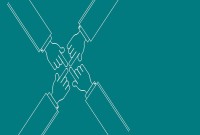- Home
- Business Processes
- Industry Knowledge
- Aerospace Industry
- Automotive Industry
- Banking Domain
- BFSI Industry
- Consumer/ FMCG Industry
- Chemicals Industry
- Engineering & Construction
- Energy Industry
- Education Domain
- Finance Domain
- Hospitality Domain
- Healthcare Industry
- Insurance Domain
- Retail Industry
- Travel and Tourism Domain
- Telecom Industry
- Leadership Skills
- eLearning
- Home
- Leadership
- Project Leadership
- Defining Team and Teamwork
Defining Team and Teamwork
Teams are part of the modern organizational culture. Whether you are a team leader or a team member, having a better understanding of how teams work, and being able to identify where the team is in the process, is a critical part of ensuring the team is ultimately successful. Start with the basics and understand what a team is and what role they play in an organization.
Why We Need Teams?
If you visit an organization, you will find that most of the activities of the organization are performed by a group of persons. Most of the work in organizations is done in teams. In an organization, activities are arranged in such a way that requires collective contribution. In fact, new organizations can be described as composed of teams.
In modern organizations, individuals are required to work in different types of teams. Even though individuals are important, their effectiveness depends, to a large extent, on the teams of which they are members. Every individual contributes to the achievement of a common goal. The individuals interact, collaborate, coordinate, and influence among the members. Thus, most of the time individuals work in a team.
Difference Between Groups and Teams:
A team consists of individuals. However, the collection of individuals in a place may be only a crowd. When individuals come together for certain tasks, then we have the formation of a group. A group is not necessarily a team. A group can have individuals with varied interests, attitude as well as thought processes. It is not necessary that the group members would have a common objective or a common goal to achieve. Let’s define these terms.
What is a Group?
The main function of a group is to exchange task-related information and discuss task-related issues. The accountability in the group Building Roles and Teams remains of the individual. Each individual brings his/her competencies as well as the relevant information related to the task. Thus the group can be defined as a collection of individuals working in face-to-face relationships to share information and resources for a task to be achieved.
Group V/s Team:
The team is qualitatively different from the group in several ways. The team functions almost like an individual. In other words, the team is accountable for results; collective responsibility is taken. There is mutuality and complementarity of the members of the team. The most important characteristics of a team are that it creates synergy, i.e., the performance of the team is more than the collective performance of the individual members. Hence, A team can be defined as a group of individuals working in a face-to-face relationship for a common goal, having collective accountability for the outcome of its effort.
Difference between Groups and Teams:
|
Attribute |
Group / Work-Group |
Team |
|
Purpose |
Same as that of Organization |
Teams could be created for a specific purpose, distinct from that of the organization |
|
Work Products |
Individual |
Collective |
|
Process |
Discuss, decide, delegate |
Discuss, decide, do |
|
Leadership |
A single leader |
Shared Leadership |
|
Meeting |
Efficient |
Open, Problem Solving |
|
Accountability |
Individual |
Individual and Mutual |
|
Performance |
Performance typically depends on the work of individual members. |
Performance depends on both individual contributions and collective work products- the joint outcome of team members working together |
|
Responsibility |
Members of groups do not take responsibility for any results other than their own, although they do pool their resources to attain a goal |
Each team member shares responsibility for the team outcome. |
|
Goal |
Groups share a common interest goal |
Teams share a common interest goal plus a common commitment to purpose which supplies a source of meaning and emotional energy to the activities performed. |
|
Evaluation |
Indirect (Eg. Financial) |
Direct (Collective Work Product) |
Definition - What is a Team?
A team may be defined as a group of two or more people who interact and influence the members for the achievement of a common goal. A team is a group of individuals, all working together for a common purpose. The individuals comprising a team ideally should have common goals; common objectives and they should be compatible with each other.
"A team is a small number of people with complementary skills who are committed to a common purpose, performance goals, and approach for which they are mutually accountable." - Katzenbach and Smith, 1993
“A team is groups of two or more people who interact and influence each other, are mutually accountable for achieving common objectives, and perceive themselves as a social entity within an organization.” - Steven and Mary Ann Von
A team is defined as a reasonably small group of people, who:
- Are committed to a common purpose
- Hold themselves mutually accountable for achieving a clear and identifiable set of goals
- Mayor may not have complementary skills
Characteristics of a Team:
Based on this definition given above, the characteristics of the teams may be elaborated as under:
- A group of two or more persons
- Having regular interactions among members
- Ability to influence the behavior of team members
- Members are mutually accountable
- Members are interdependent
- They together form a social entity
- Work towards the achievement of common goal Each member’s contribution is as important as any other member’s contribution
- Congruence between the achievement of individual goals and that of the team goal
The frequency of interactions, influence, and the nature of tasks may determine the formation of a group, i.e., long-term, short-term, formal, informal, etc. Many new managers and supervisors reading this article will be taking over the management of an existing team rather than bringing together a new one. However, understanding these basics will help you put together your ideal team if you had the opportunity. This will help you fully understand the issues you may face.
Each individual is a contributor and brings a set of skills and knowledge to the organization. When we bring those individuals together, there is a wider range of skills and experience, and as a leader, you are able to come up with even better solutions.
Related Links
You May Also Like
-
Evidence of the medically damaging symptoms of work stress necessitates applying the treatment of stress management. Stress management is increasingly drawing the attention to the management experts not only as a remedial measure but also as a way to resource management. If the workplace can be made a little more lovable the increase in the achievement of the organization may be much time more. If group stress can be removed by introducing group discussions and recreational facilities a long-lasting team spirit may get developed.
-
The development of teams is an ongoing process because the composition of the team may keep on changing. The new members may join and the old members may leave the team. The team members pass through several stages for the development of the team and there has been a lot of research to identify these stages. In this article, we discuss the common theories of team development.
-
Change & Culture of Innovation
Predicting the future is a tricky business but managers need to have a future perspective in order to take business advantage and remain competitive. They need to drive and introduce constructive change to the business of the enterprise. The first step to creativity and innovation is to drive a culture of Innovation. Managers need to focus on developing future mindset all the time to keep pace with the unfolding future.
-
This style is characterized by leaders making decisions for others and expecting followers to follow instructions. The directive leader is adept at giving instructions, setting expectations, and establishing timelines and performance standards. However, it is possible for the same leaders to display both directive and supportive behavior as per the demands of the situation.
-
Many people think communication is easy. It is said that communication can never be a hundred percent complete. Many factors are involved in the process of communication and something can always go wrong with one or more of these. It becomes difficult and complex when we put barriers in communication. Recognize barriers to interpersonal communication and examine specific strategies for overcoming those barriers.
-
Concept & Definition of Stress
Stress is a popular expression used by people in day to day life. Pressures of day to day living sometimes necessitate coping or dealing with them and stretch the body beyond its natural capacity. They are called stressors. Stress is a natural, ongoing dynamic, and interactive process that takes place as people adjust to their environment.
-
All the teams are dynamic in nature and they take time to come together, they form, develop, and grow in stages, over a period of time. Teams go through five progressive stages: Forming, Storming, Norming, Performing and Adjourning. In this article, we want to introduce you to these stages of team development and certain strategies that you can use to help the team grow and develop in each of these stages.
-
Effective Business Communication
Communication is all about getting the message across correctly. To make this happen, you need to have good speaking skills and good writing skills. If you have these skills coupled with good listening skills and interest in reading, you have all the potential to be a good communicator. What things should the leader take into consideration to be more effective with interpersonal communication?
-
Many different types of teams have been identified by social scientists. Managers may encounter the diverse types of challenges while managing different kinds of teams. Challenges associated with Cross-Functional Teams might be different from that of a Geographically Dispersed Team or a Virtual Team. This article explores some common categories and subtypes of teams.
-
Process & Stages of Creativity
Creative ideas do not come just like that. There is a process to it. There are a number of techniques of creativity to support the generation of ideas but the widely practiced ones are brainstorming and lateral thinking. Most innovations are not so much the product of sudden insights as they are the result of a conscious process that often goes through multiple stages. The creative process can be divided into four stages of preparation, incubation, evaluation, and implementation.
Explore Our Free Training Articles or
Sign Up to Start With Our eLearning Courses

About Us
Learning
© 2023 TechnoFunc, All Rights Reserved










